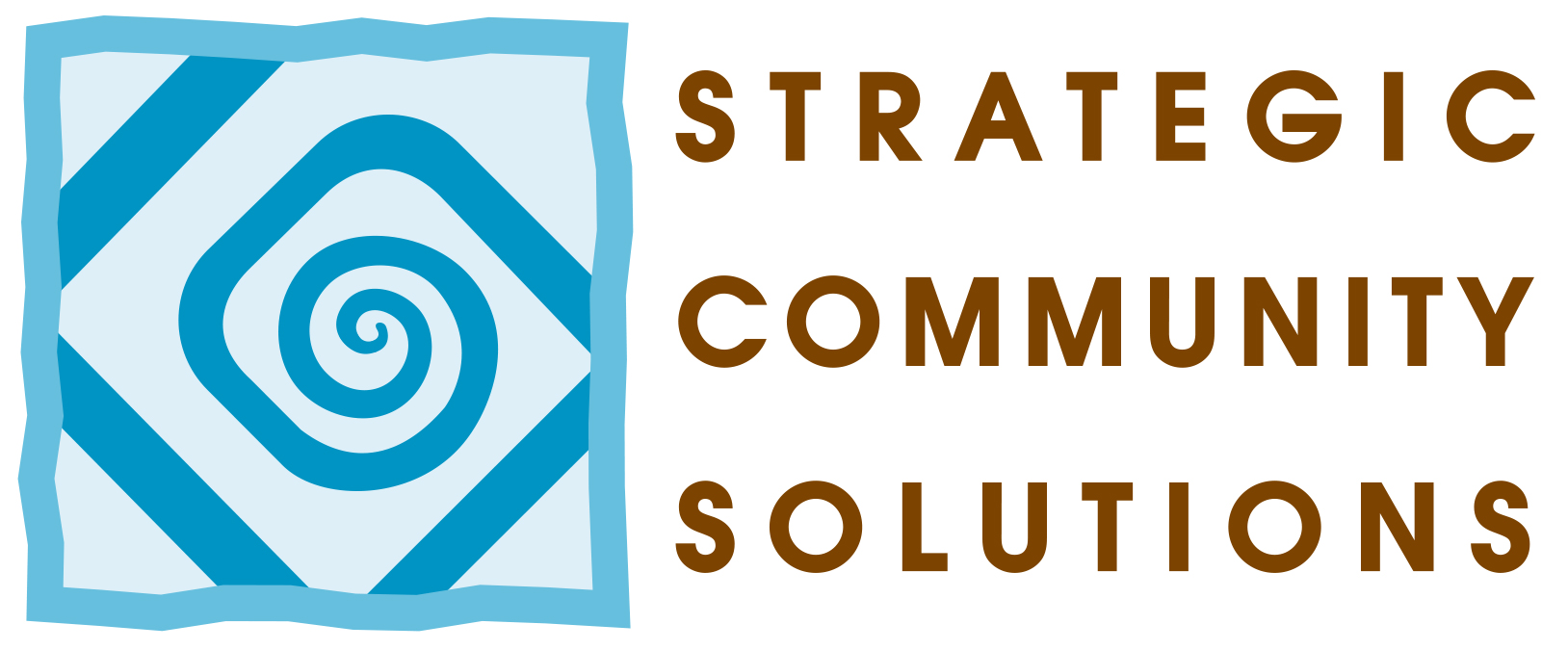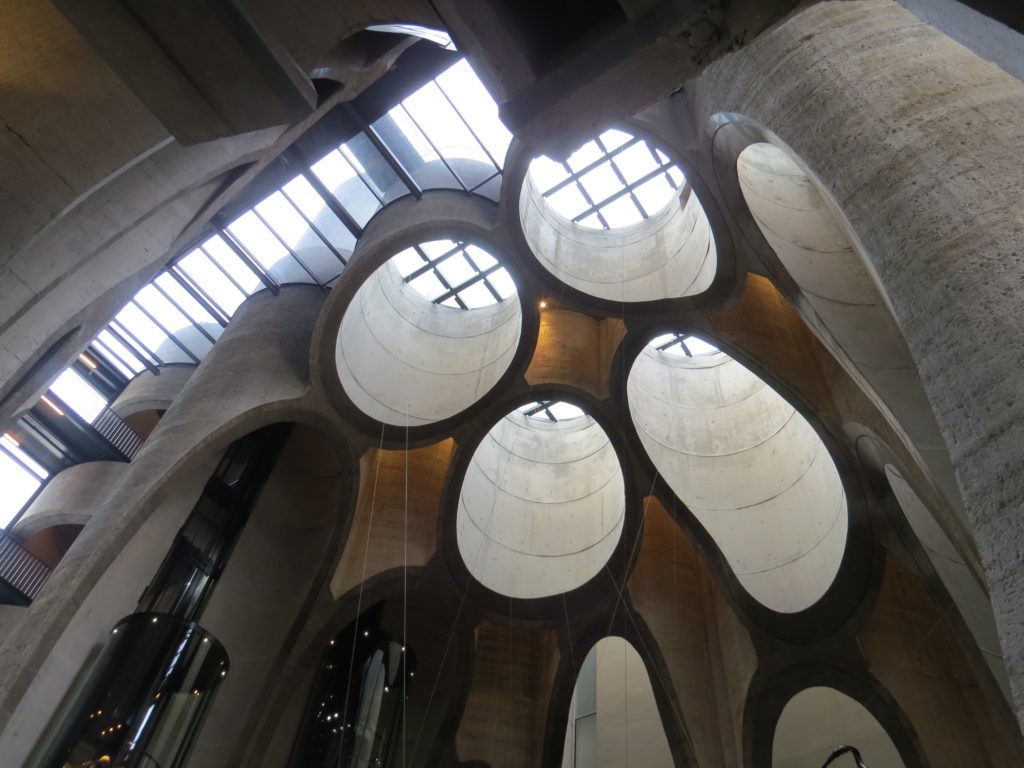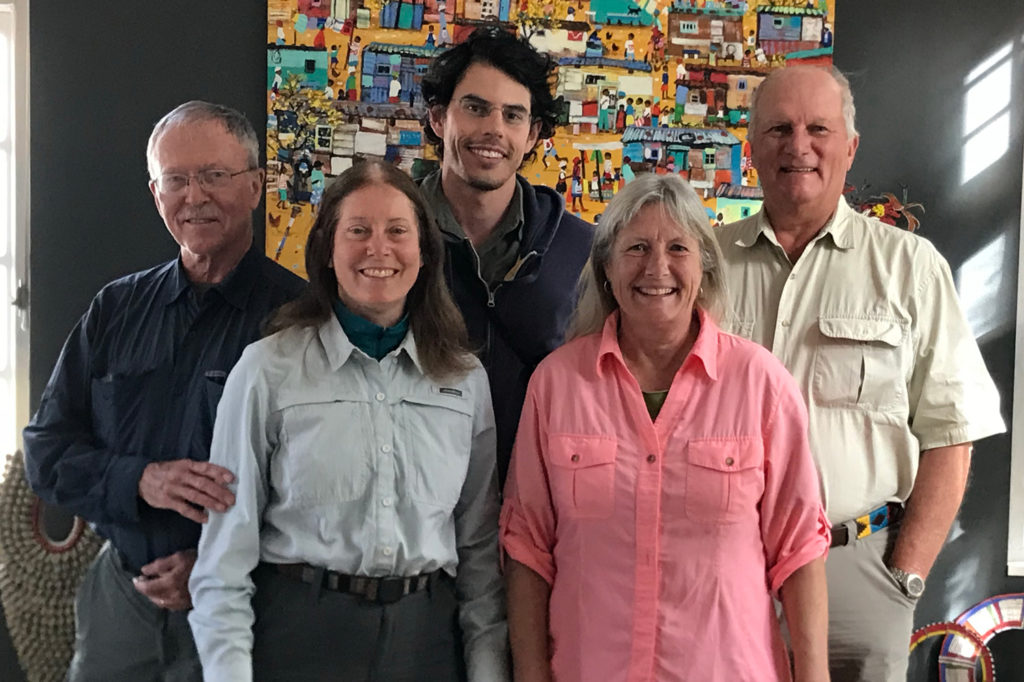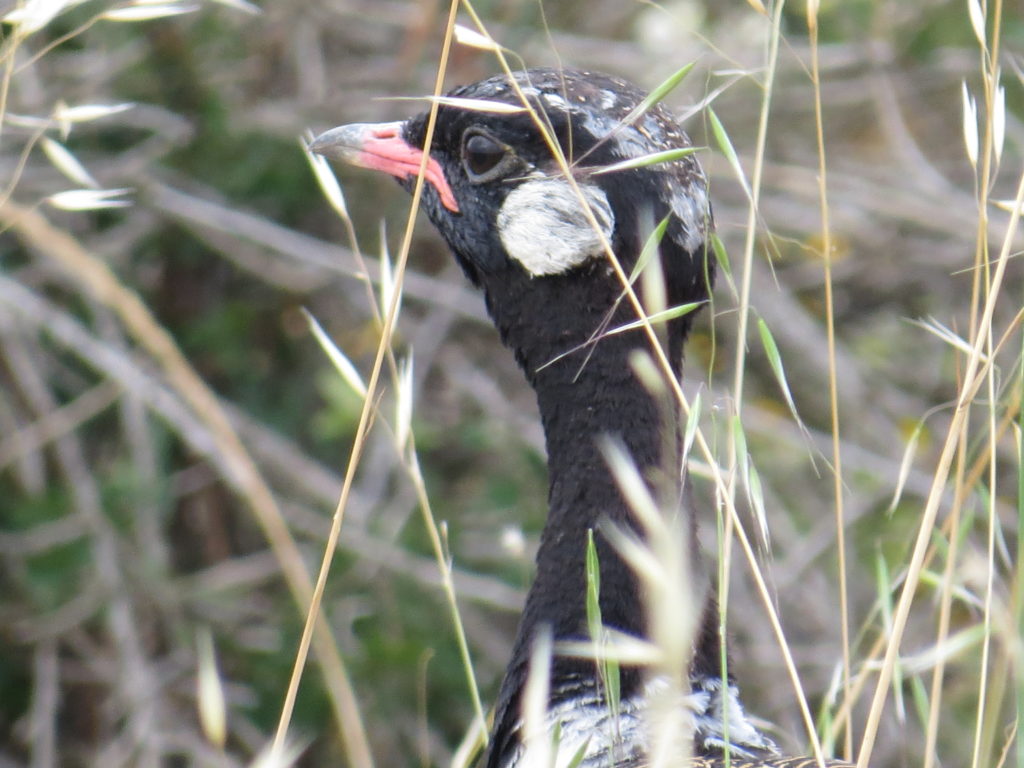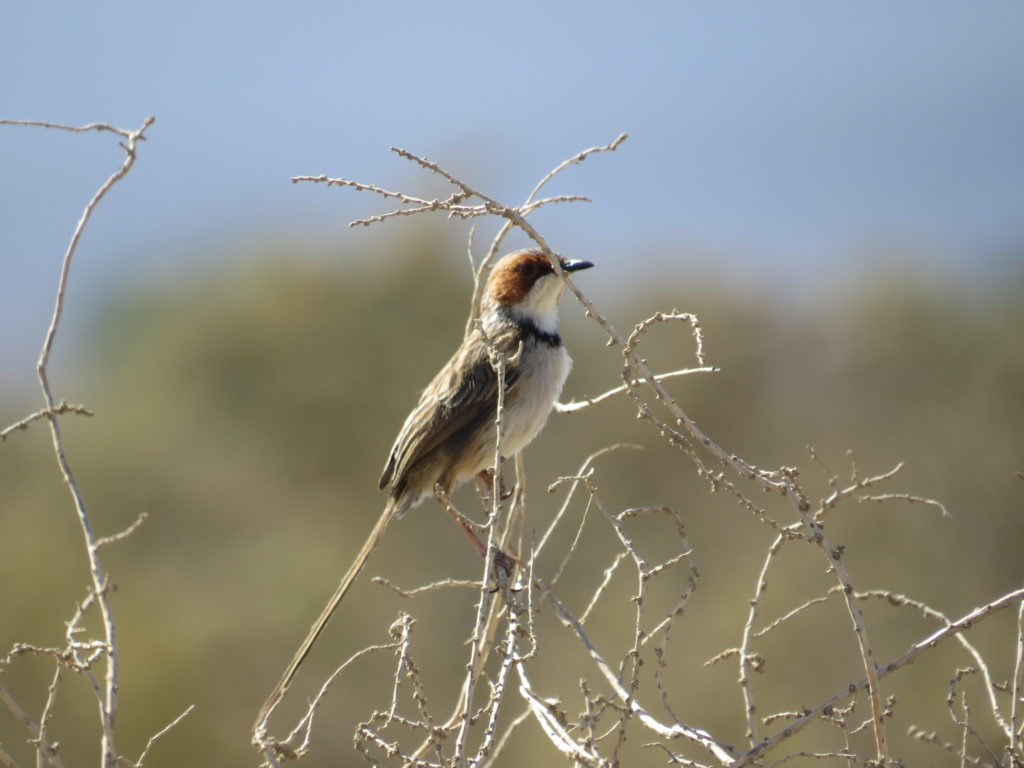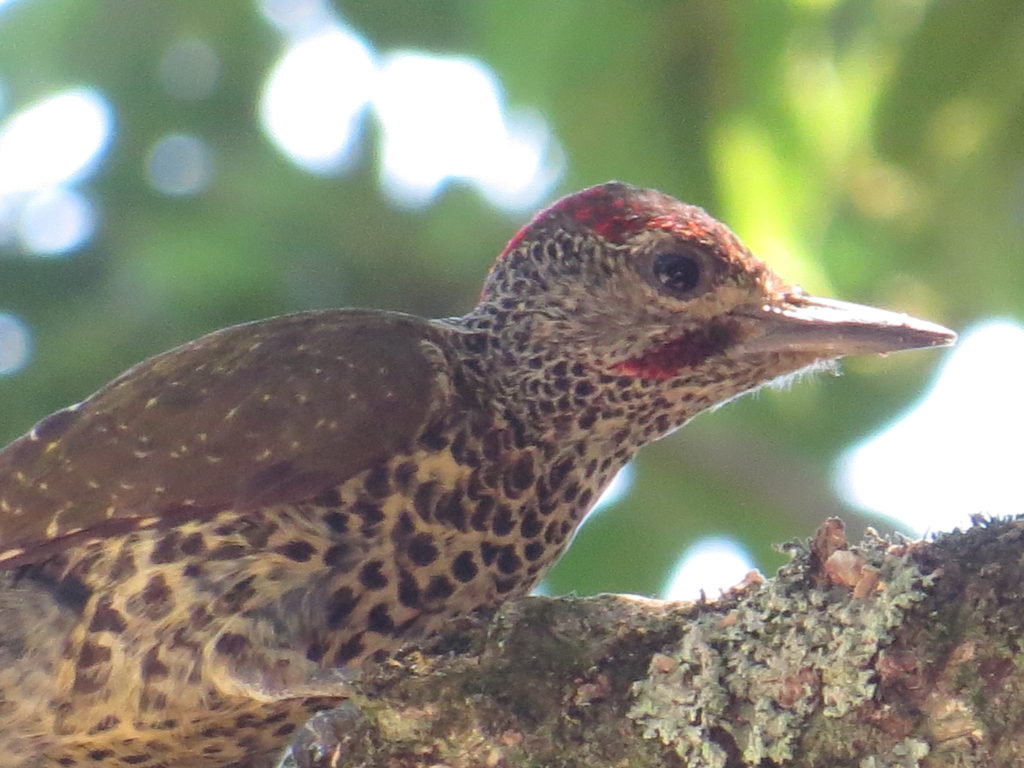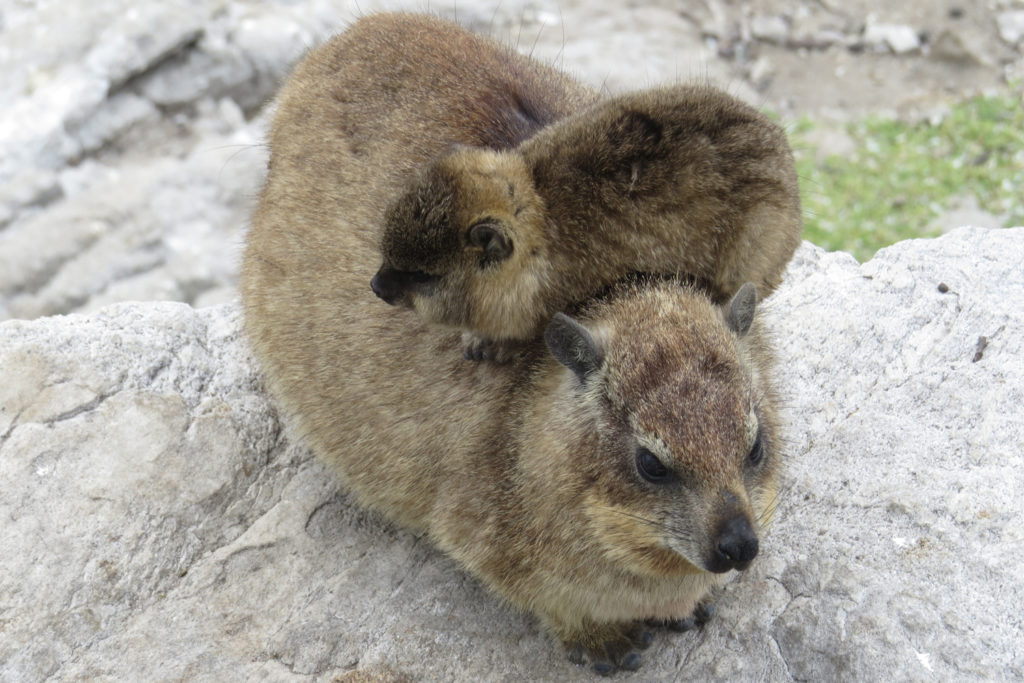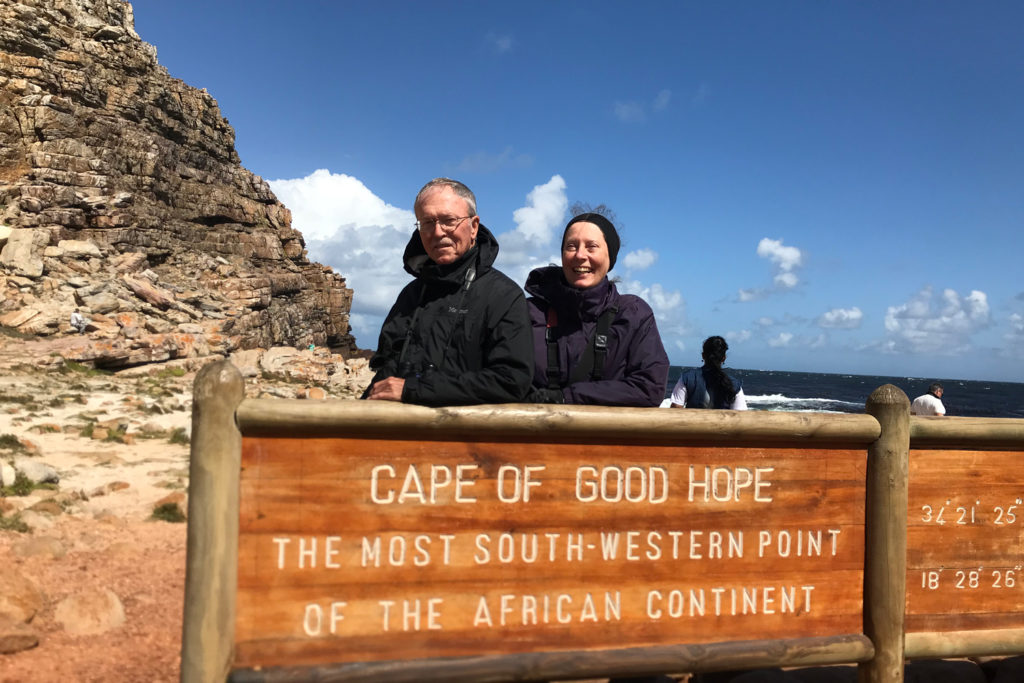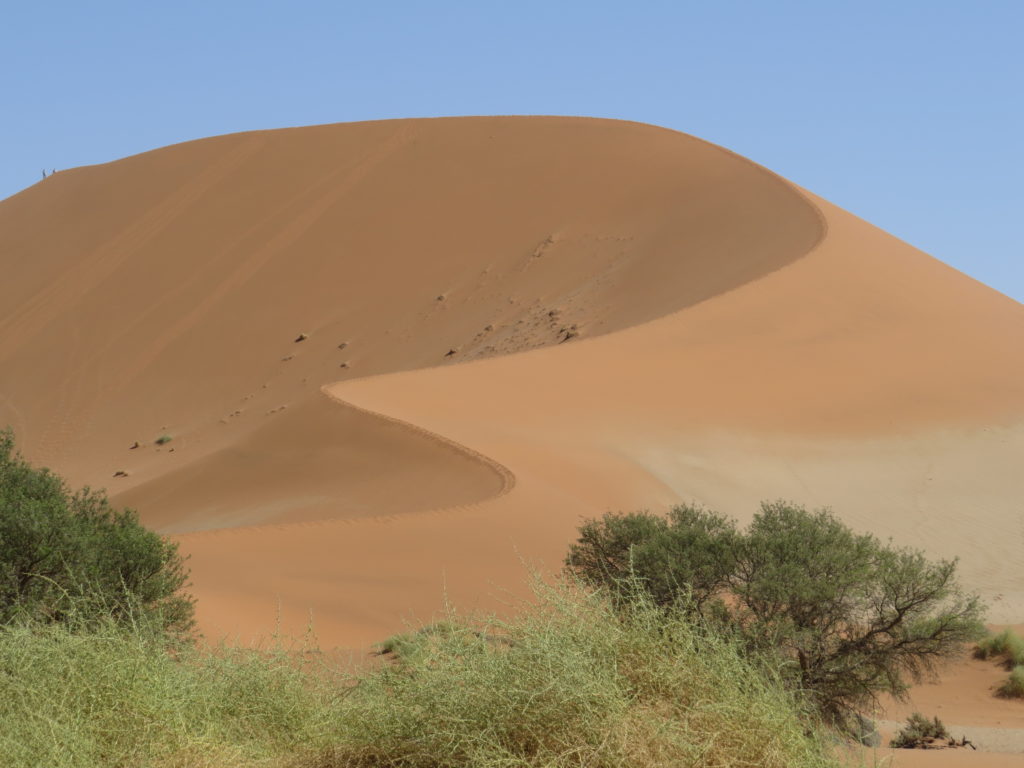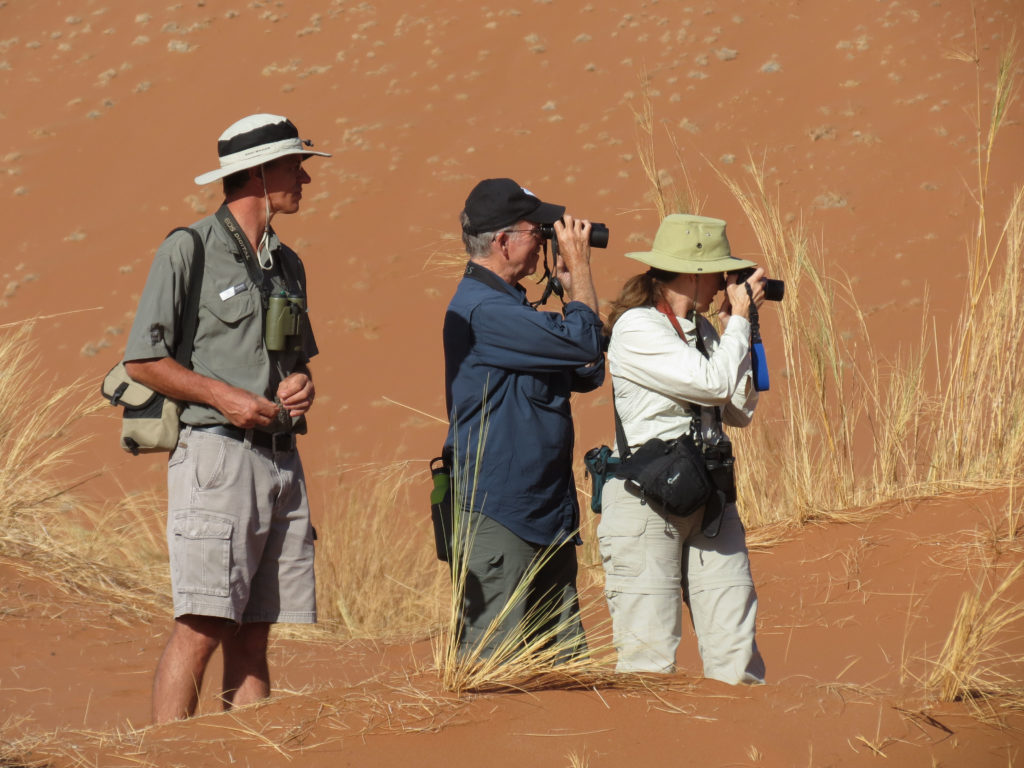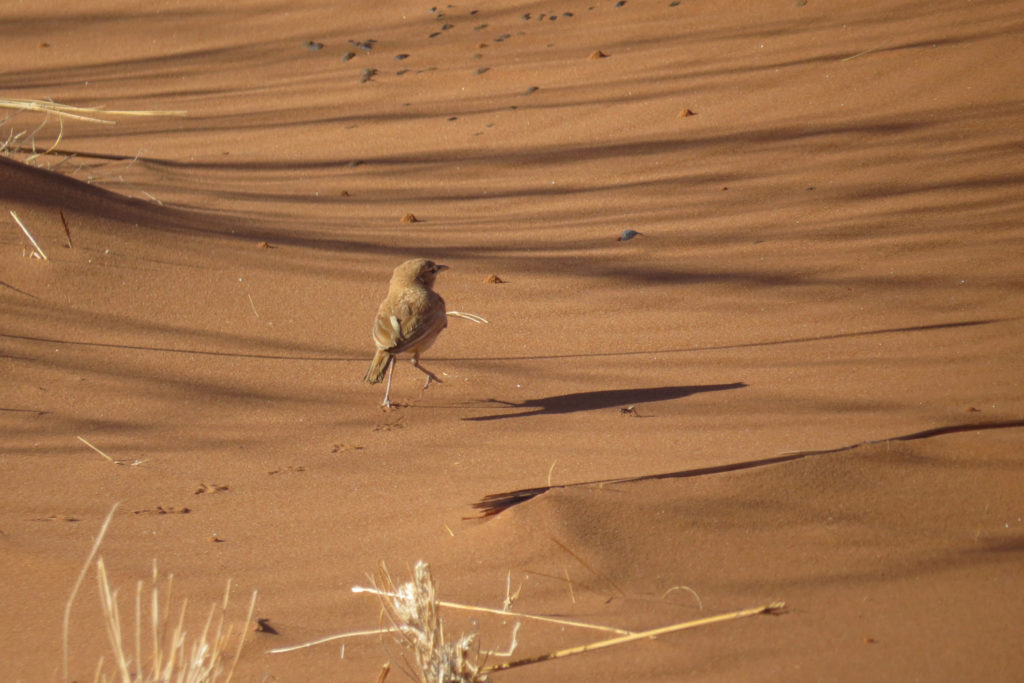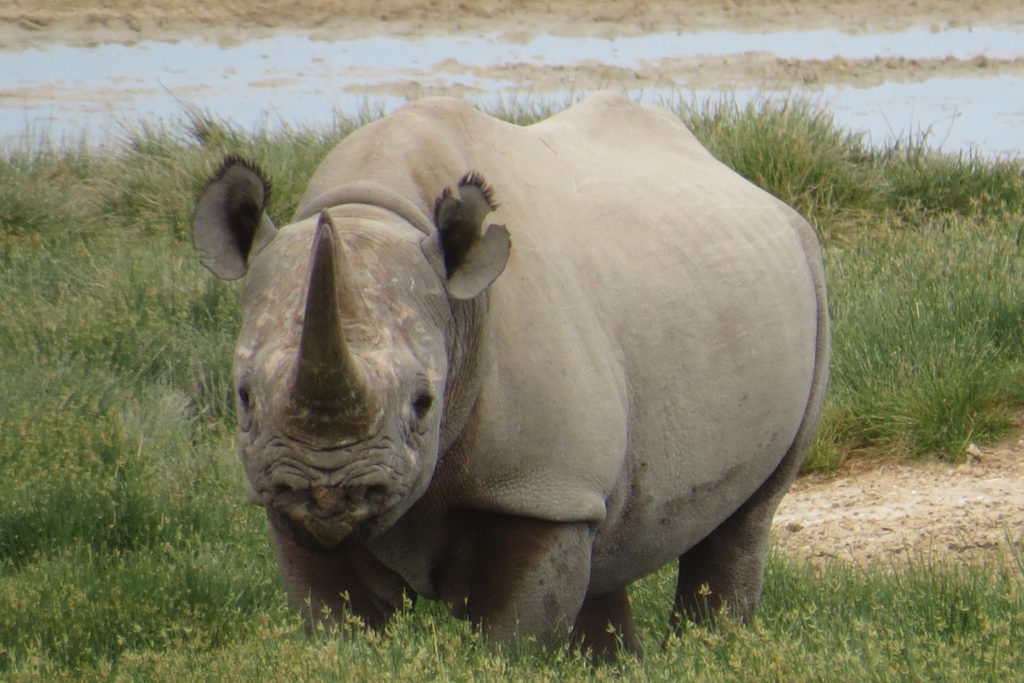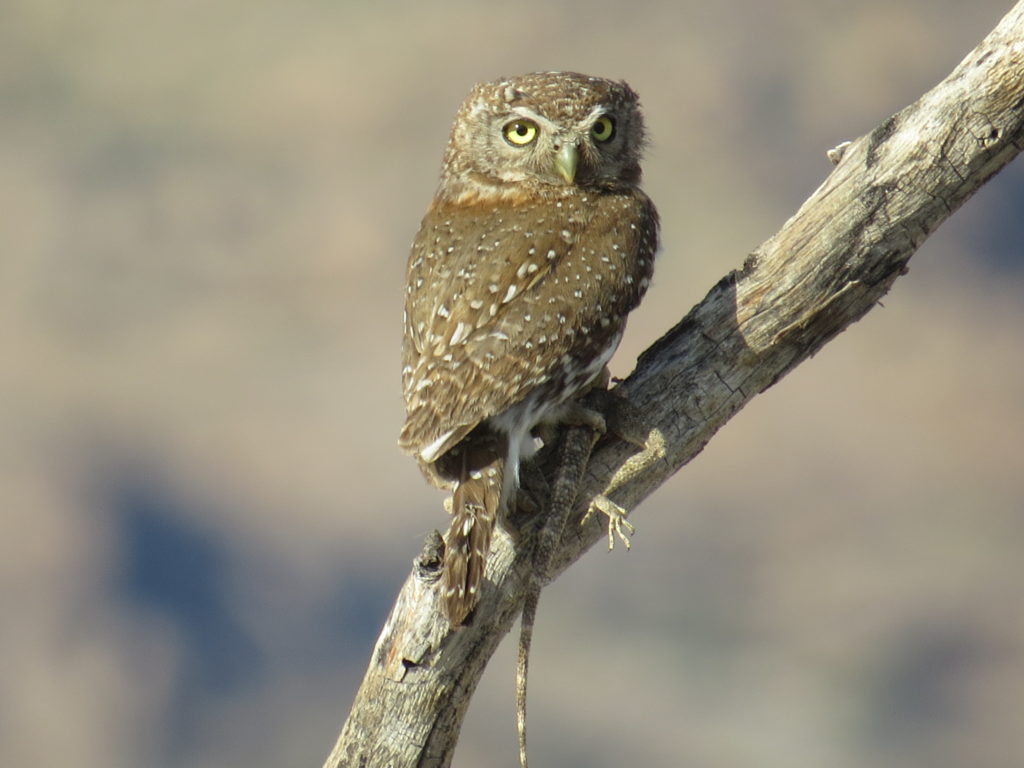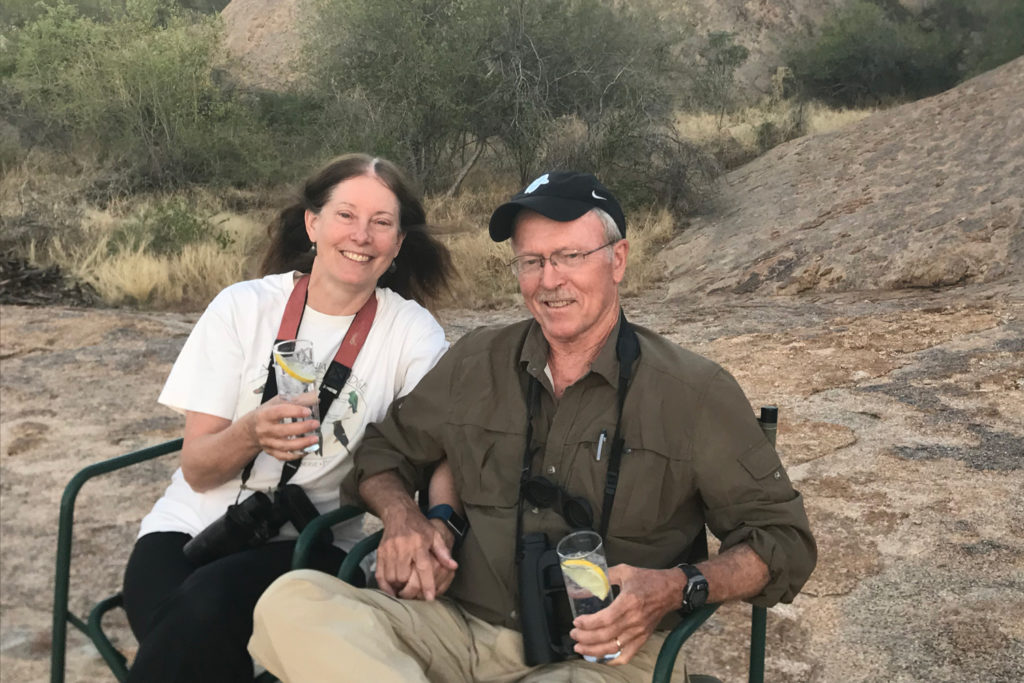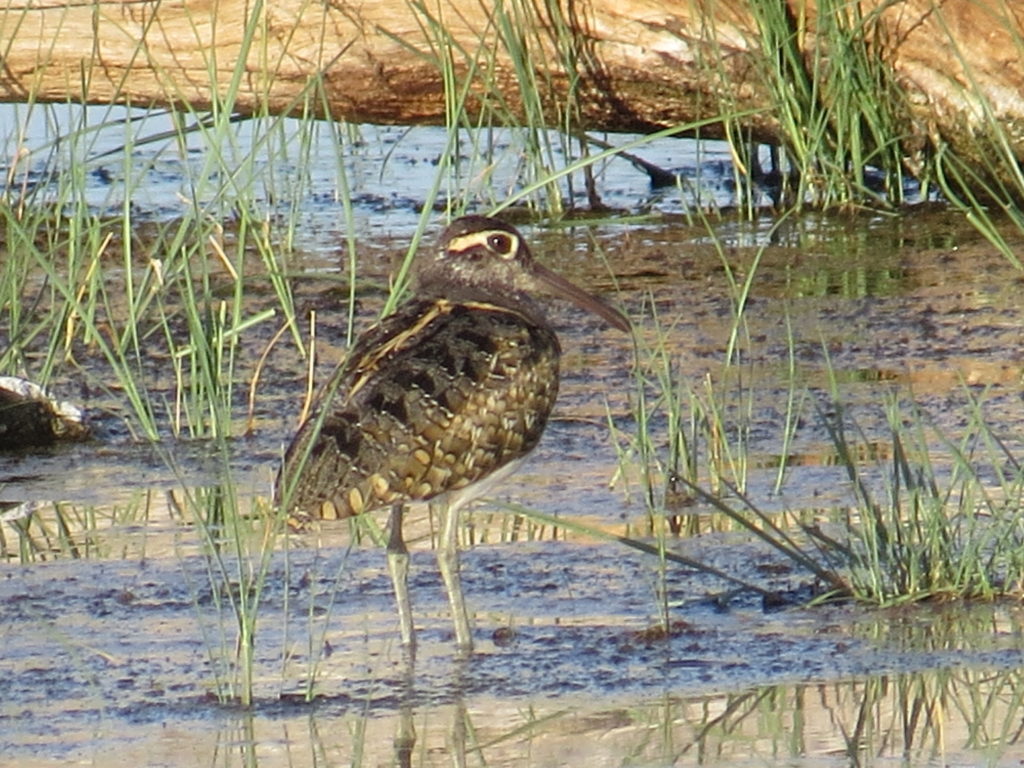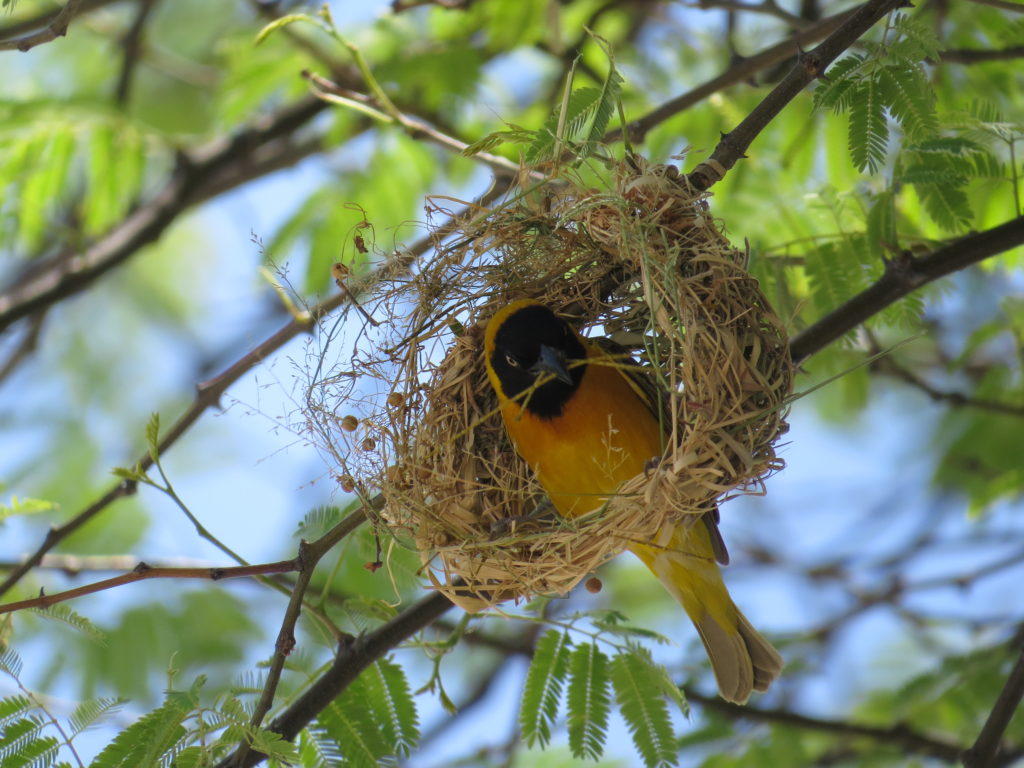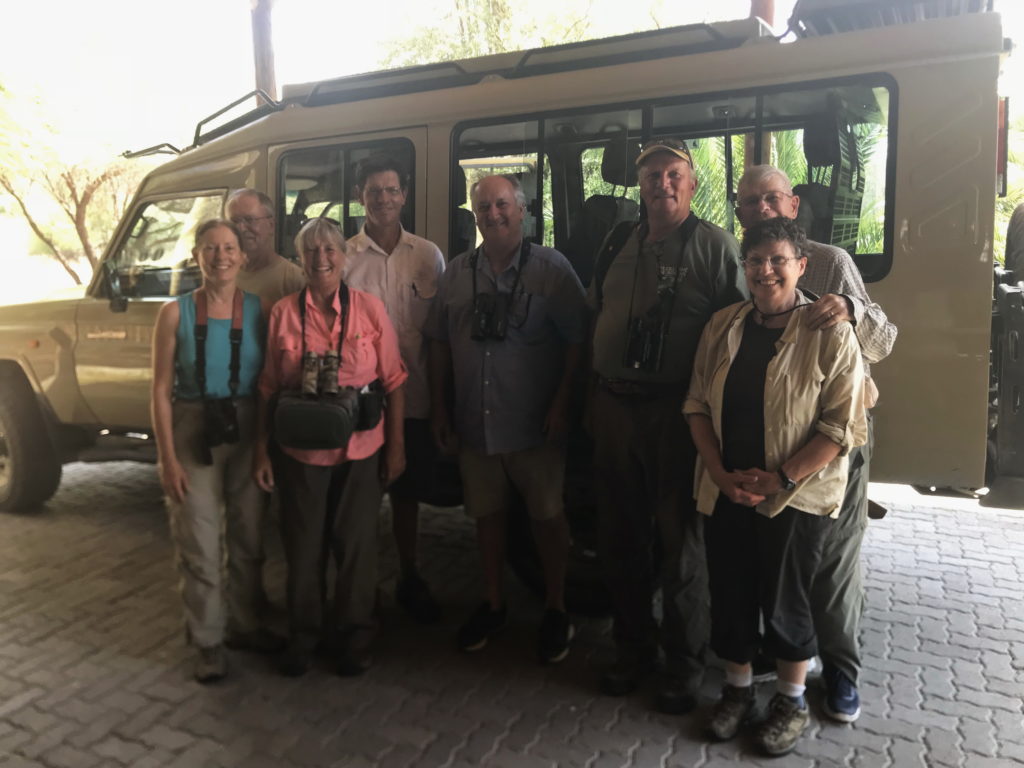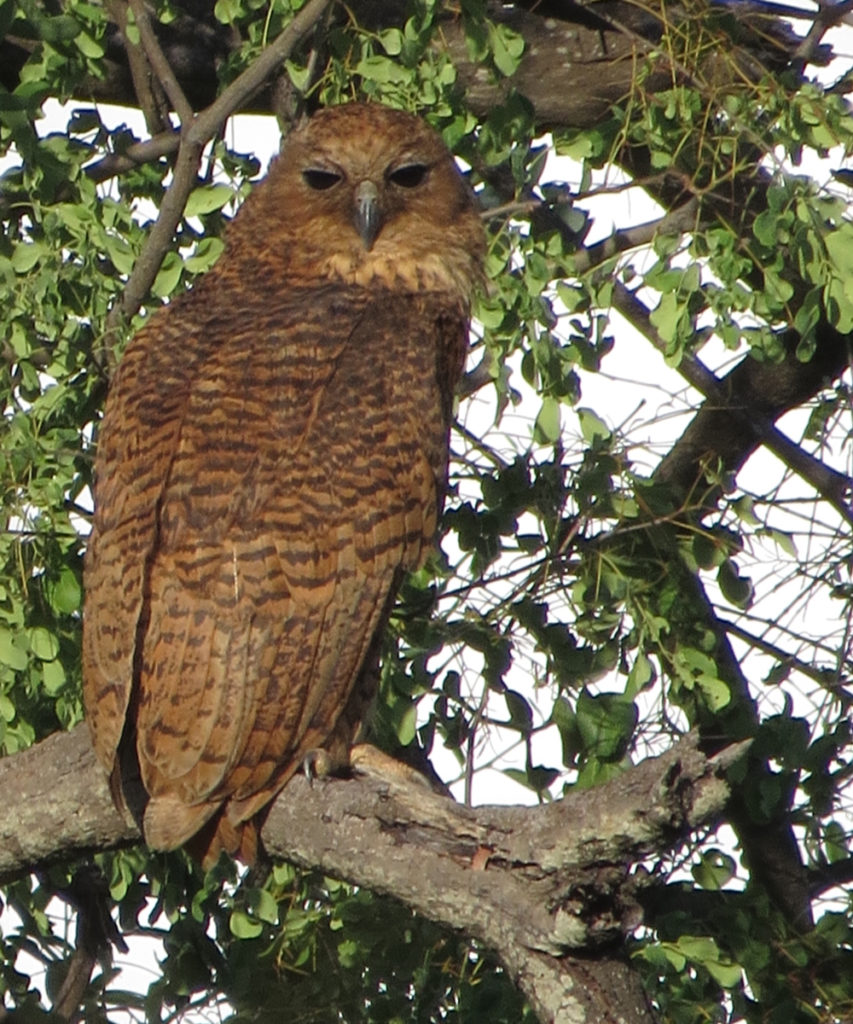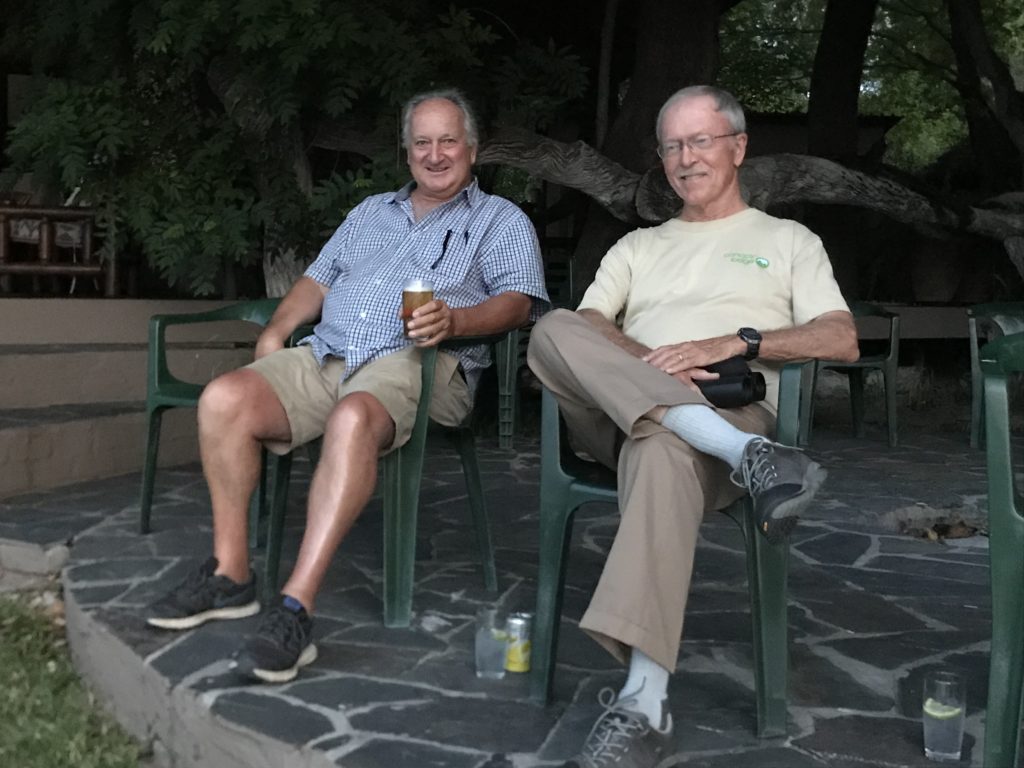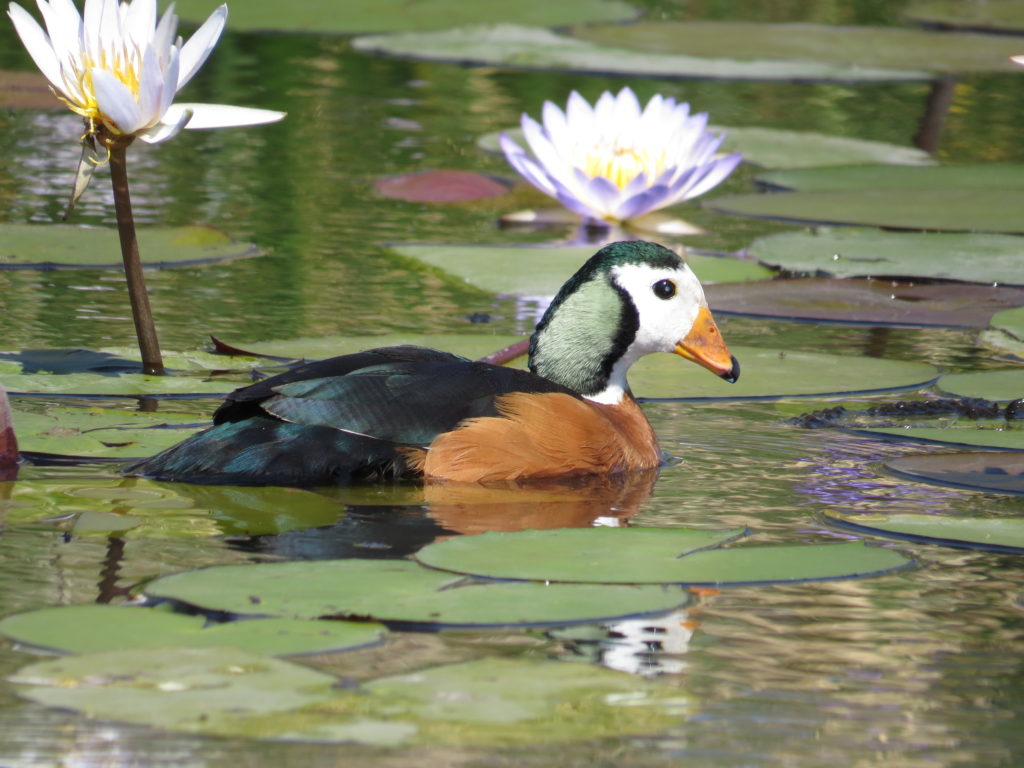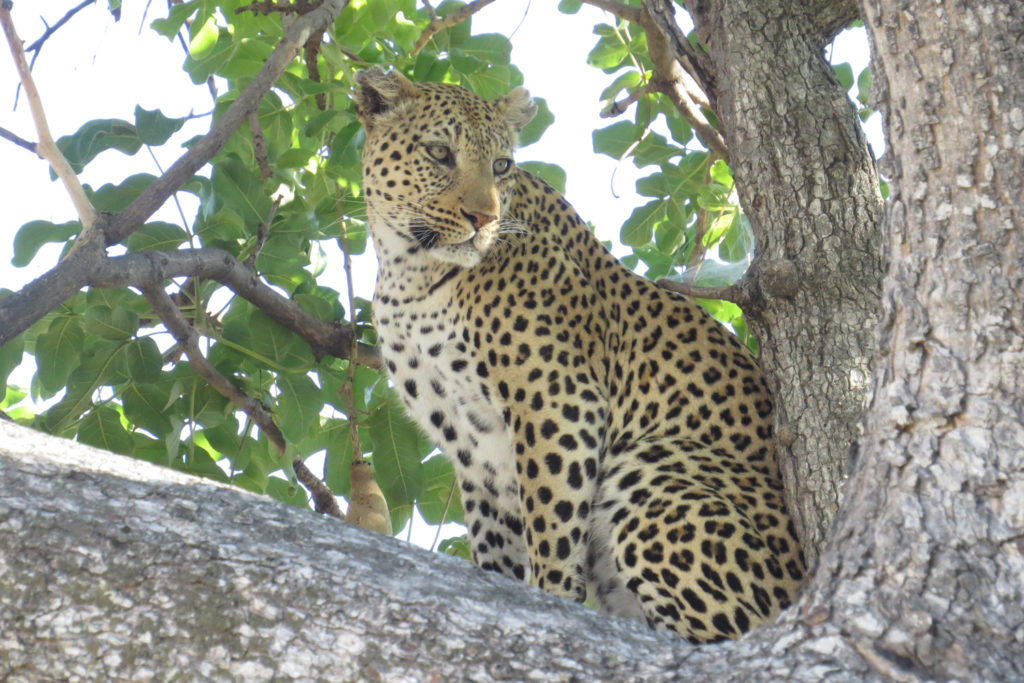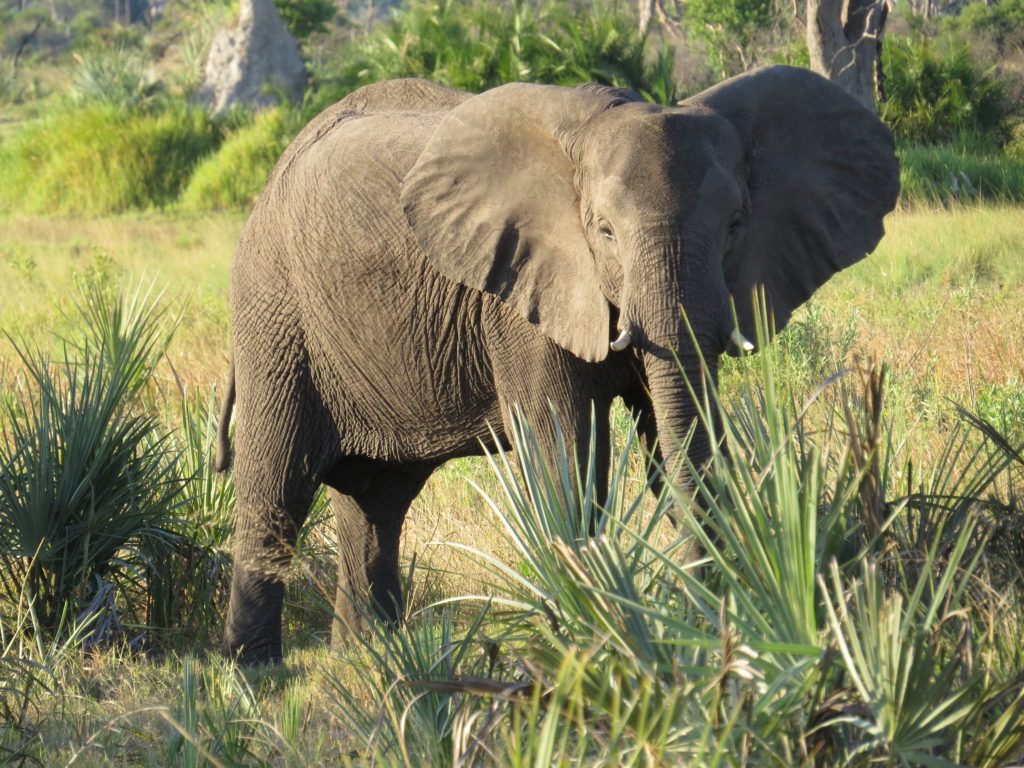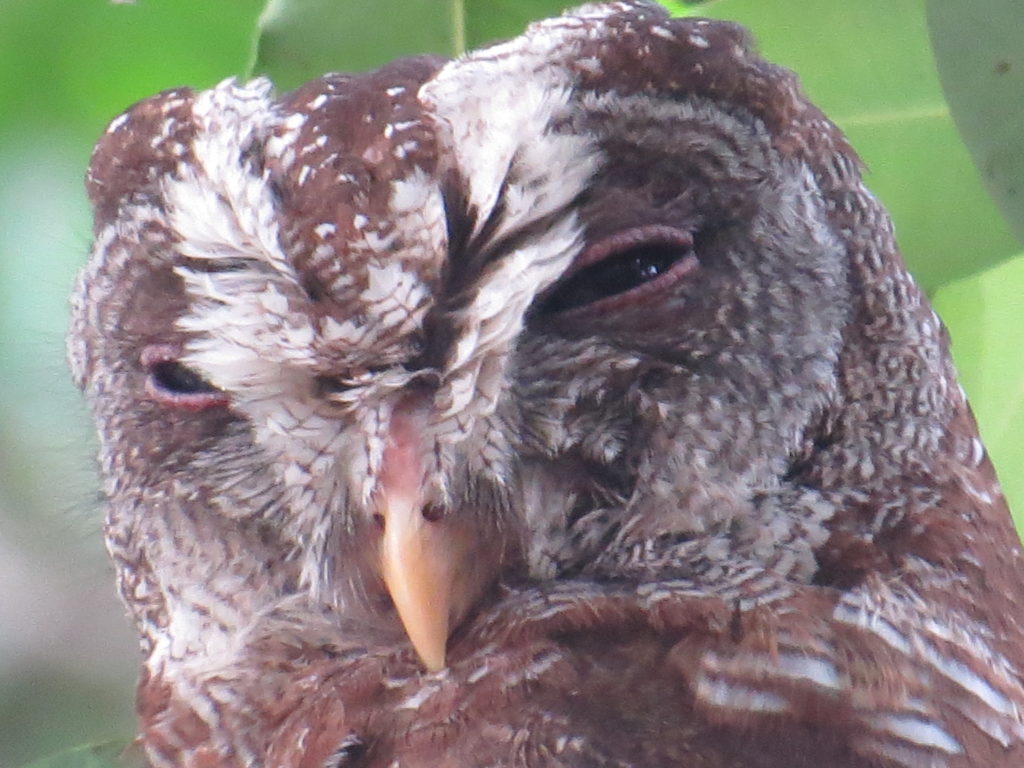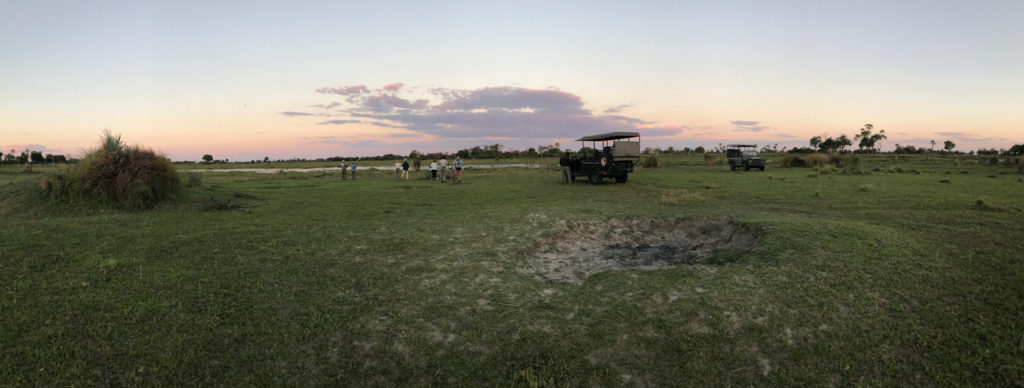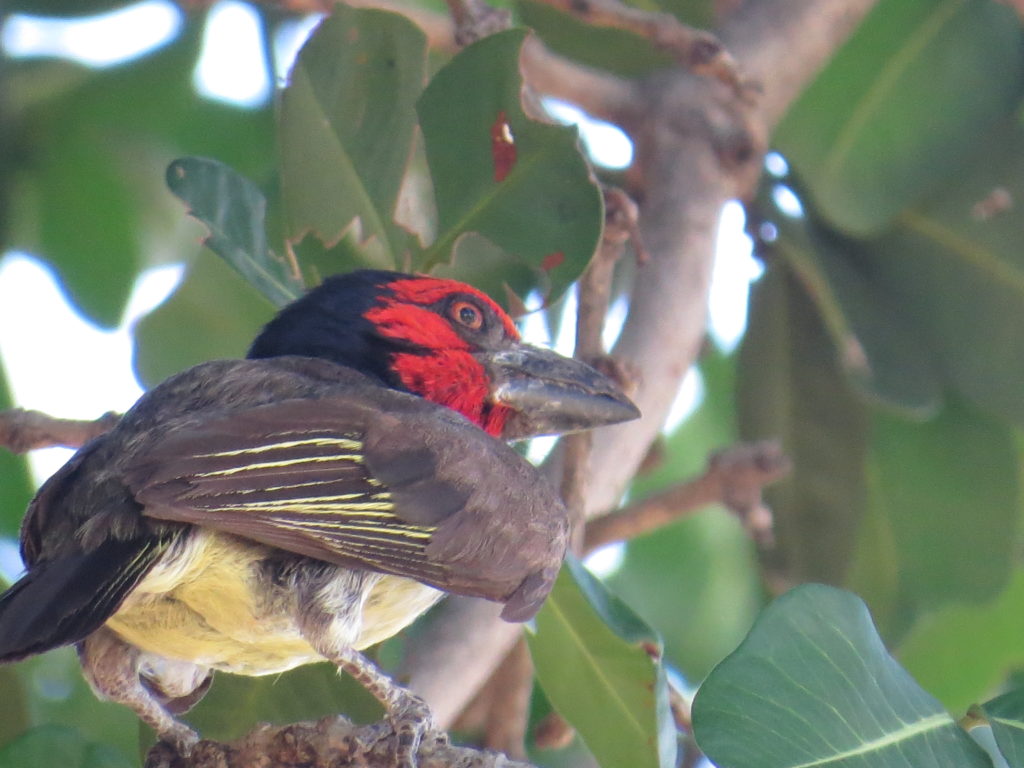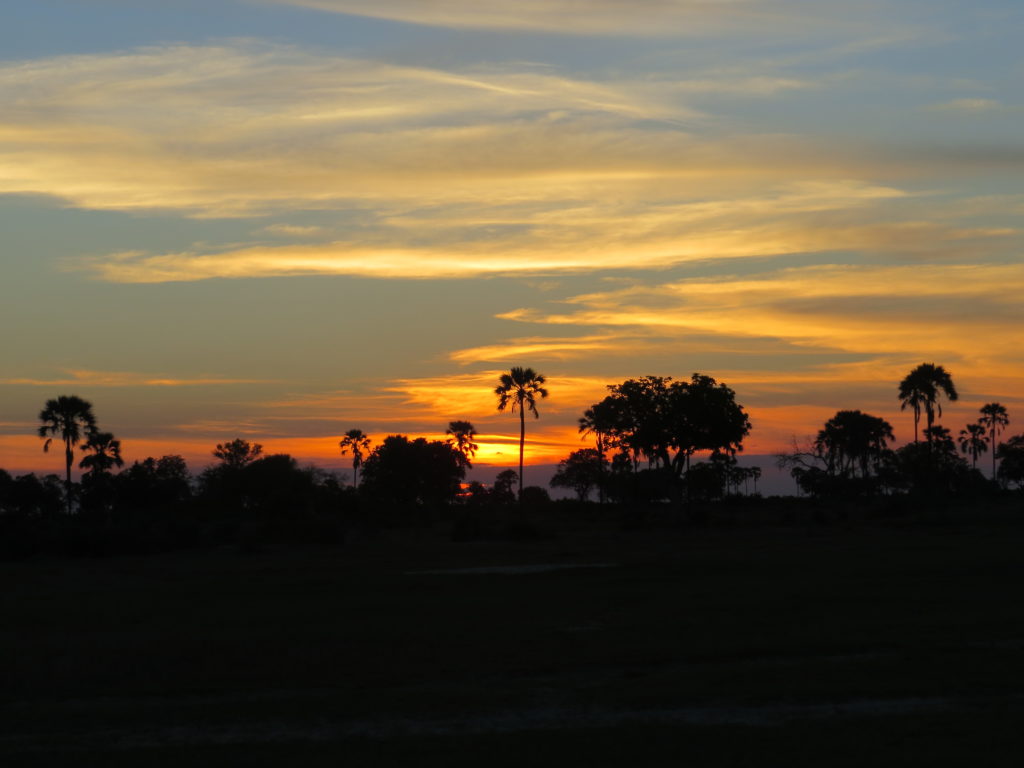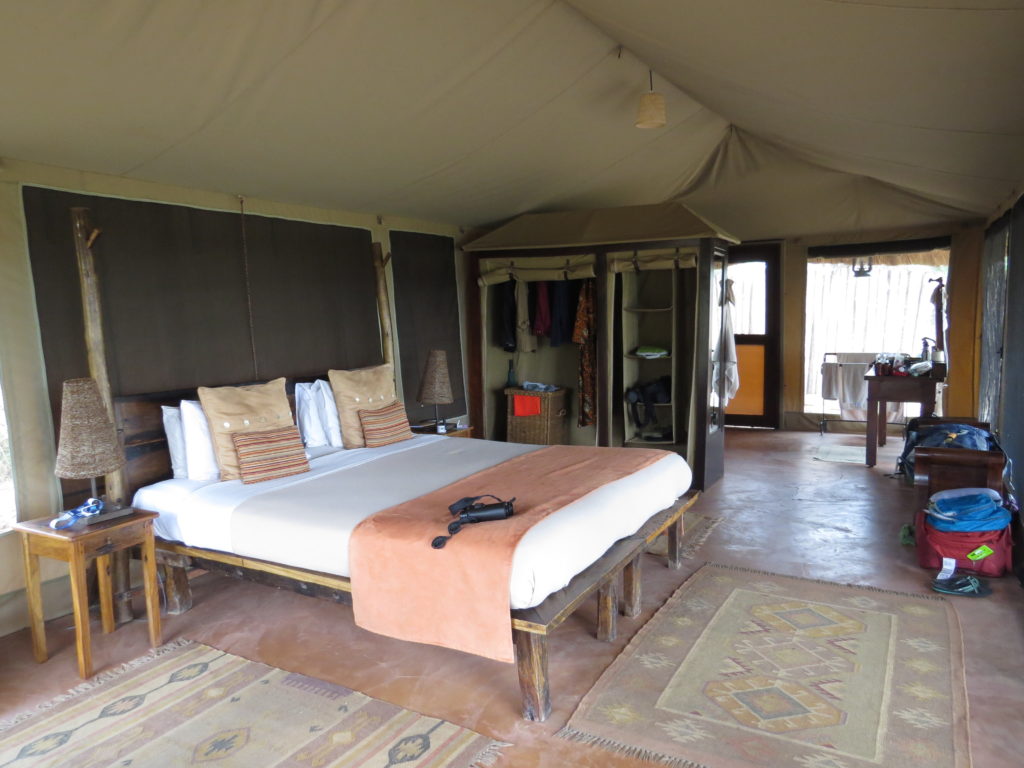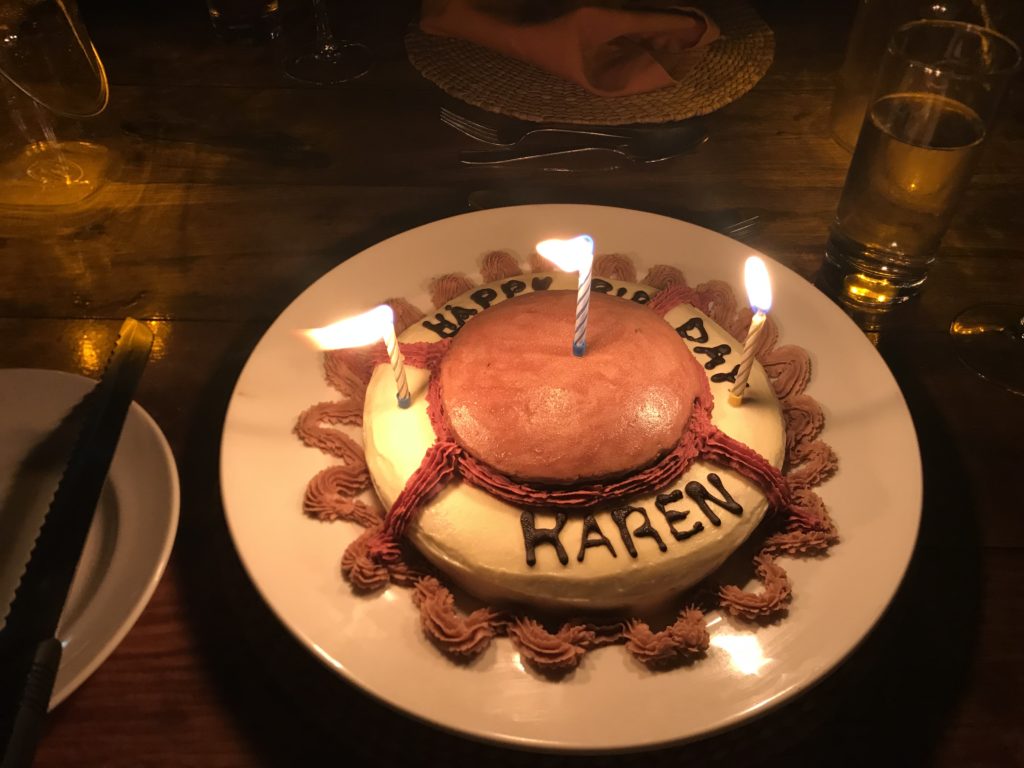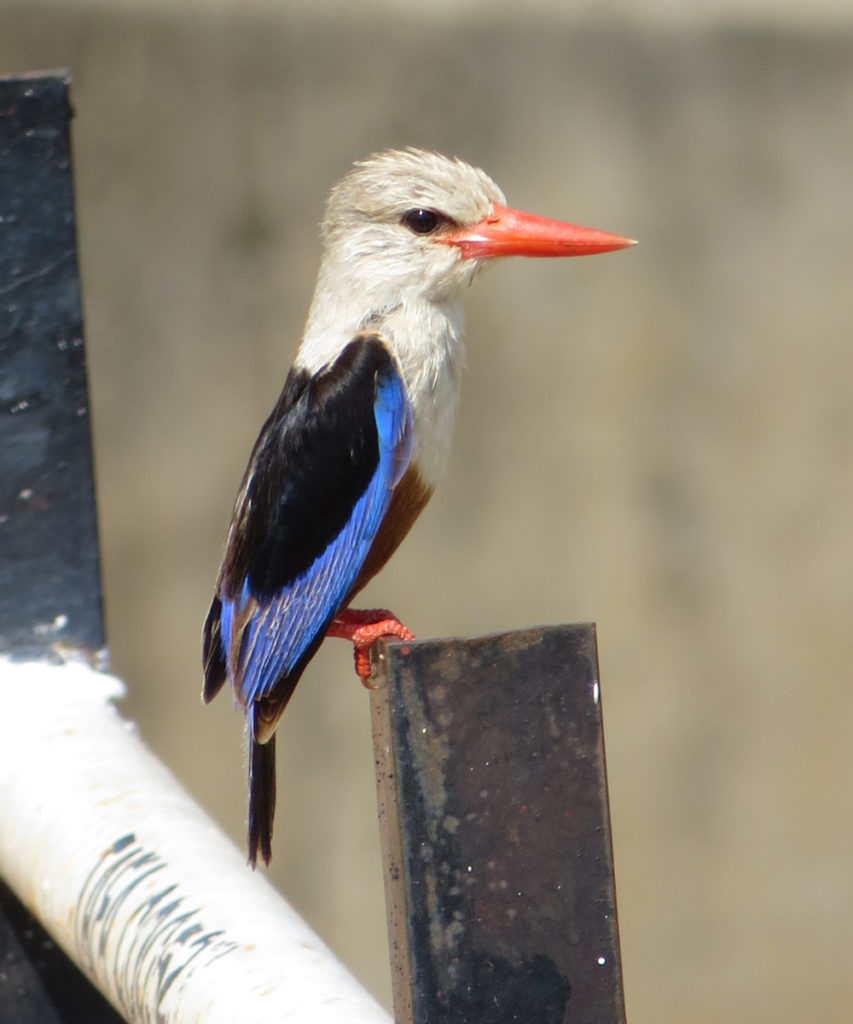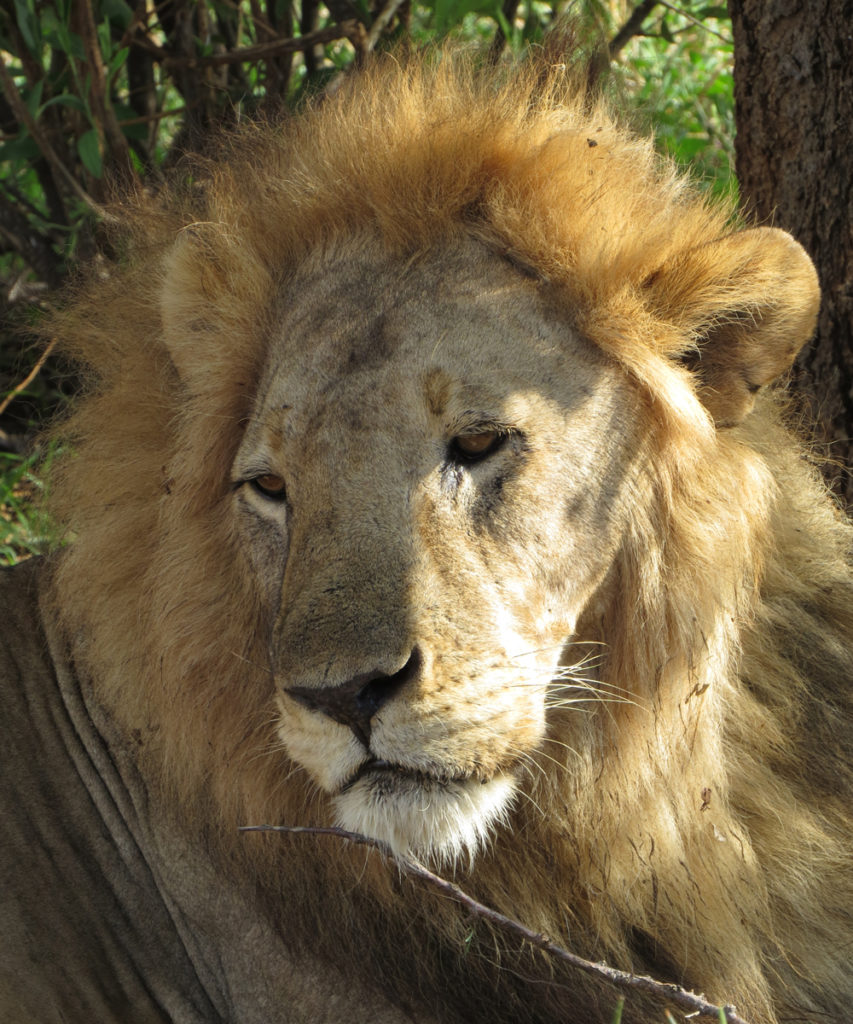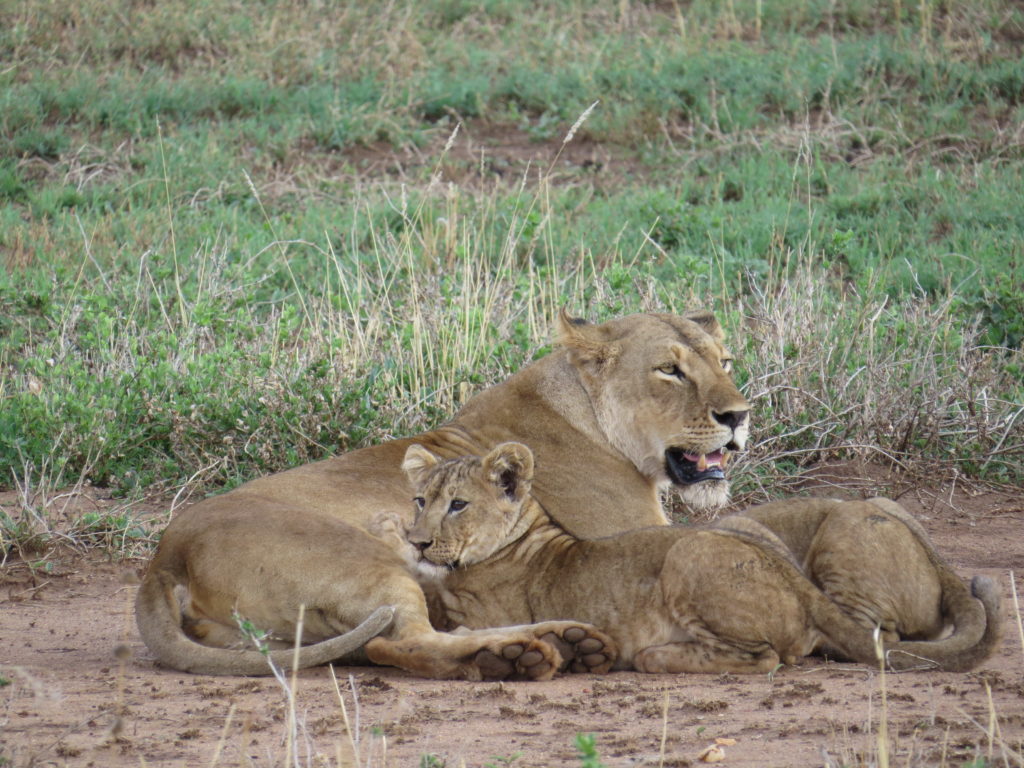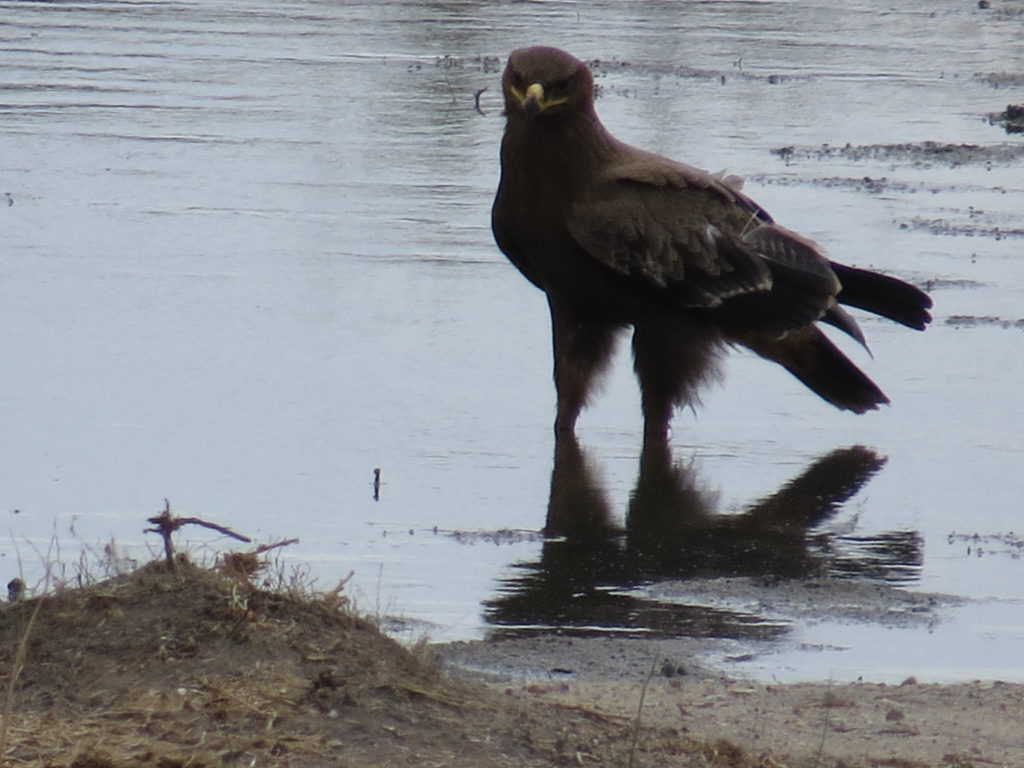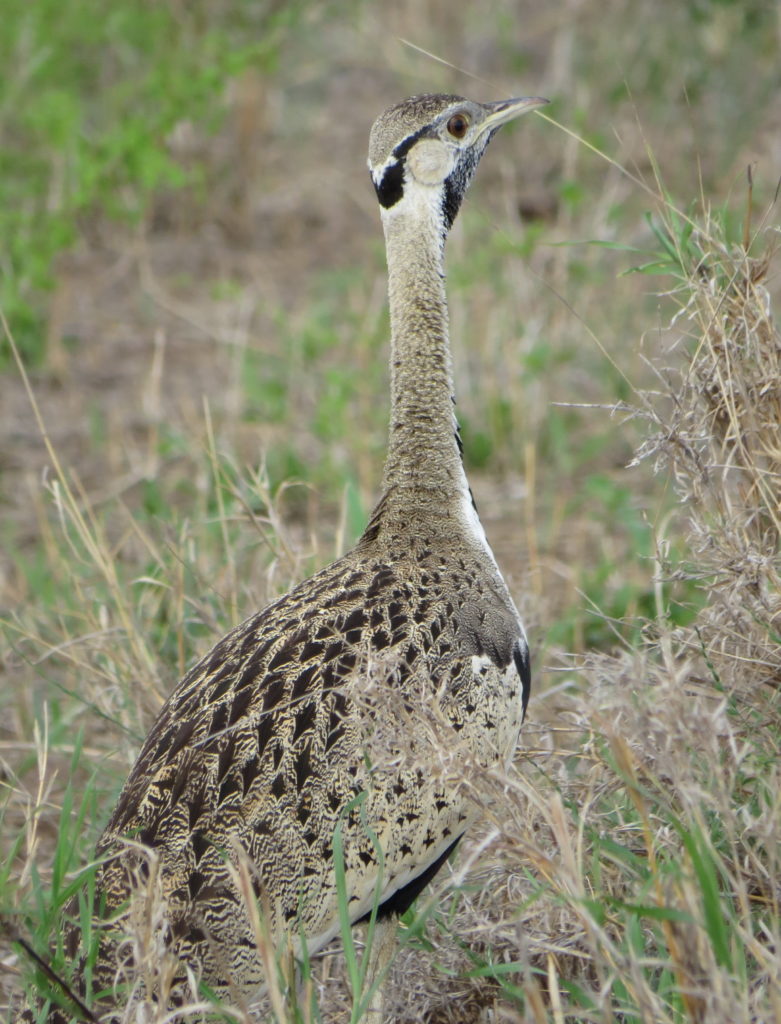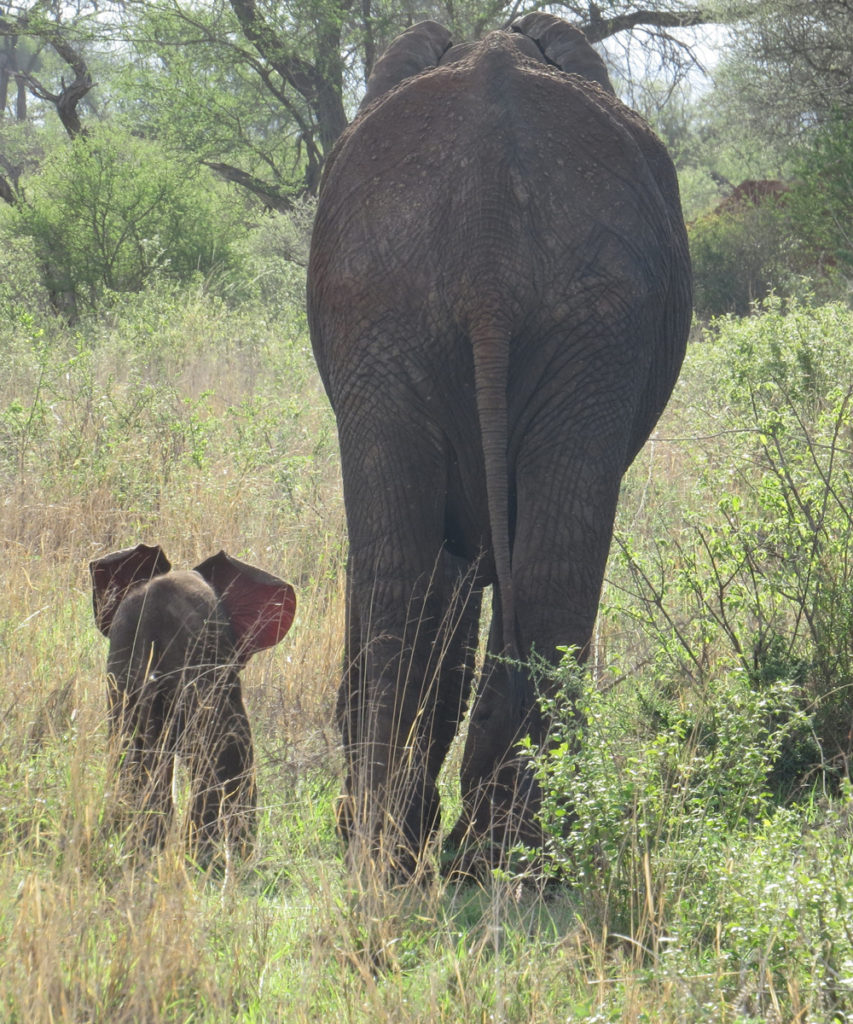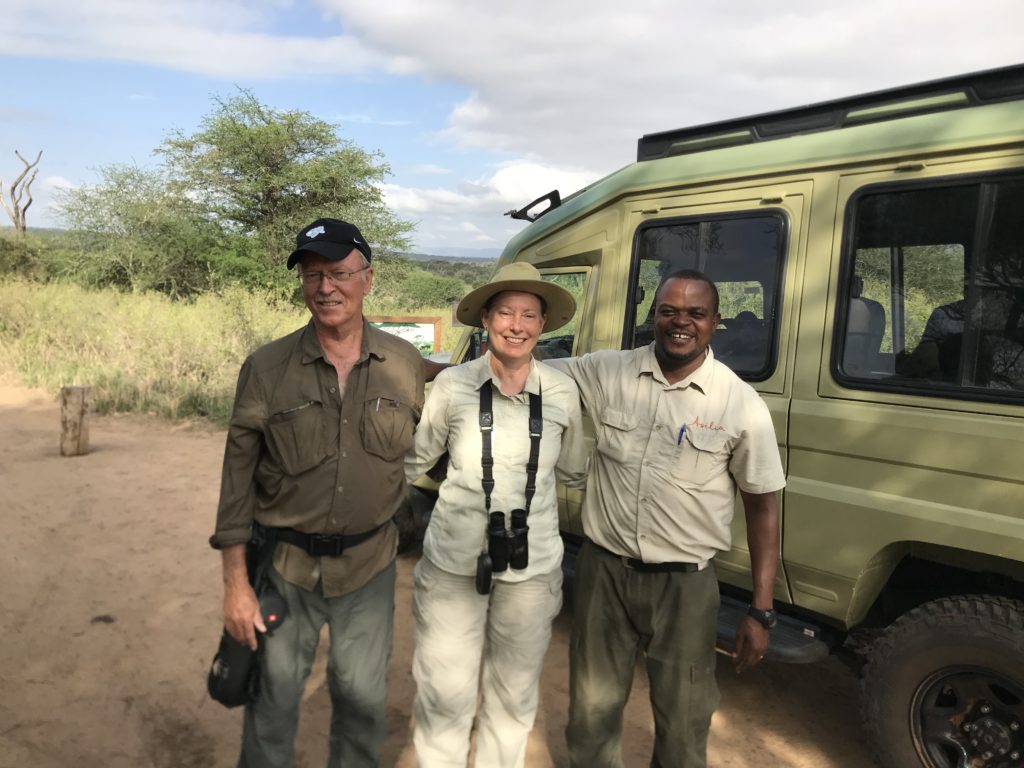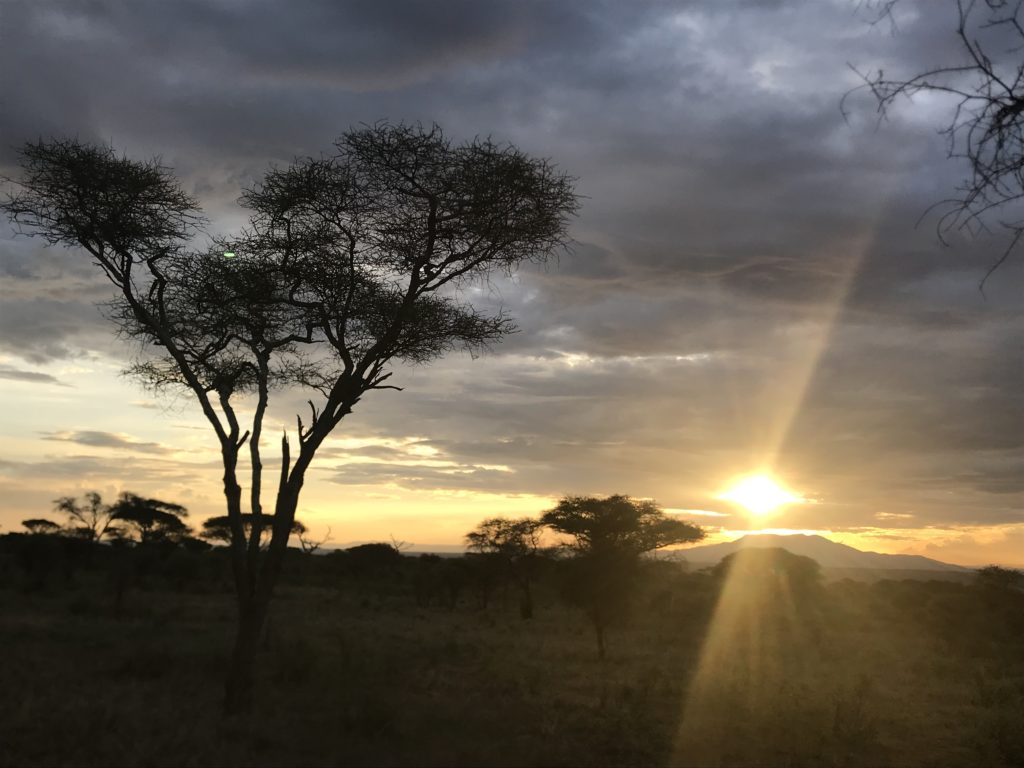Africa
- On January 8, 2018
After Brazil, we returned to the States in late September for client work, Julie’s wedding, a CA trip for the annual get-together with Karen’s mom’s sisters and cousins (and her parents’ 65th wedding anniversary!), work at the KT Ranch and the Texas planning conference. Then in early November we headed out again.
Our five-week trip in Africa began with an overnight stop in Dubai.
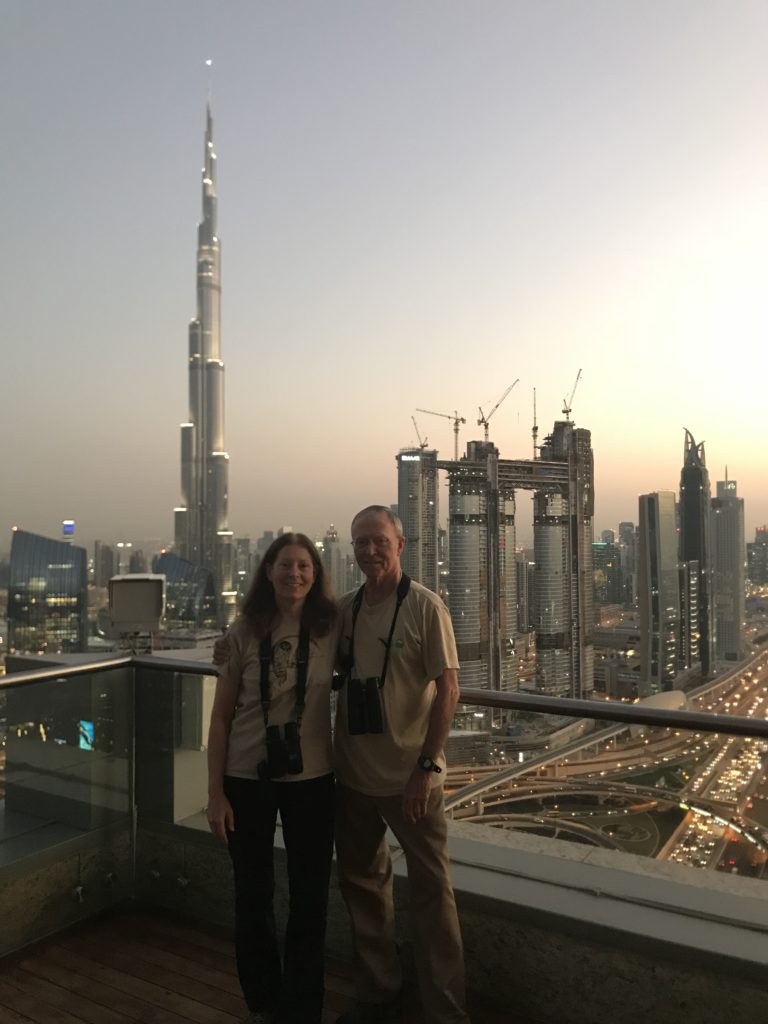
The balcony at our hotel in Dubai, with the world’s tallest building (Burj Khalifi) in the background.
Then we flew on to Cape Town, South Africa, where we met our friends Dan and Barbara Williams. We enjoyed Cape Town’s restaurants and its impressive new Museum of Contemporary African Art (MOCCA), housed in a row of renovated grain silos. Then we began a birding tour of western South Africa with Seth Musker of Birding Africa, who’d guided our South Africa tour in 2015. Among the memorable sights were Lemon dove, Victorin’s warbler, African oystercatcher, Southern right whale, and the Cape of Good Hope.
At the end of our time in South Africa, the four of us flew to Windhoek. Where? A city of about 320,000 residents in the Khomas Highlands plateau that’s the capital of Namibia. We joined a Field Guides tour there, adding two more participants to our group. Our guide was Terry Stevenson, a friend and one of the top experts on African birds; we also enjoyed learning from the local Namibian guide, Vernon Swanepoel. Much of Namibia is desert so we expected hot and dry conditions, but the first ‘short rains’ were supposed to be the month before we arrived. As in much of Africa, there is a multi-year drought underway in Namibia due to climate change, so there had been no rain. While we missed some birds and most of nesting because of this, we still saw some fascinating things, including the rare and secretive Dune lark. It lives in sand dunes that are deep red and among the tallest in the world. This small (7” high) bird eats tiny ants that live in burrows beneath the scarce bunch grasses in certain parts of the dunes. So finding them was quite a challenge. They’re charming when you finally see them!
From Namibia, we drove across the border into Botswana. We stayed first at a lodge on the Okavango River. Here we saw the amazing Pel’s Fishing Owl, which turned out to be species #5,500 on Terry’s lifetime bird list. Then we went further south to the area where the river enters the largest delta in the world that does not have an outlet to an ocean. The Okavango Delta is a latticework of small streams and channels with wetlands and islands throughout. Among the incredible sights here was a female leopard who walked right next to our jeep as she carried her impala kill along the trail and then up a tree to stash it for her cubs! At our camp here we saw a second Pel’s Fishing Owl, still holding part of a fish in its talon.
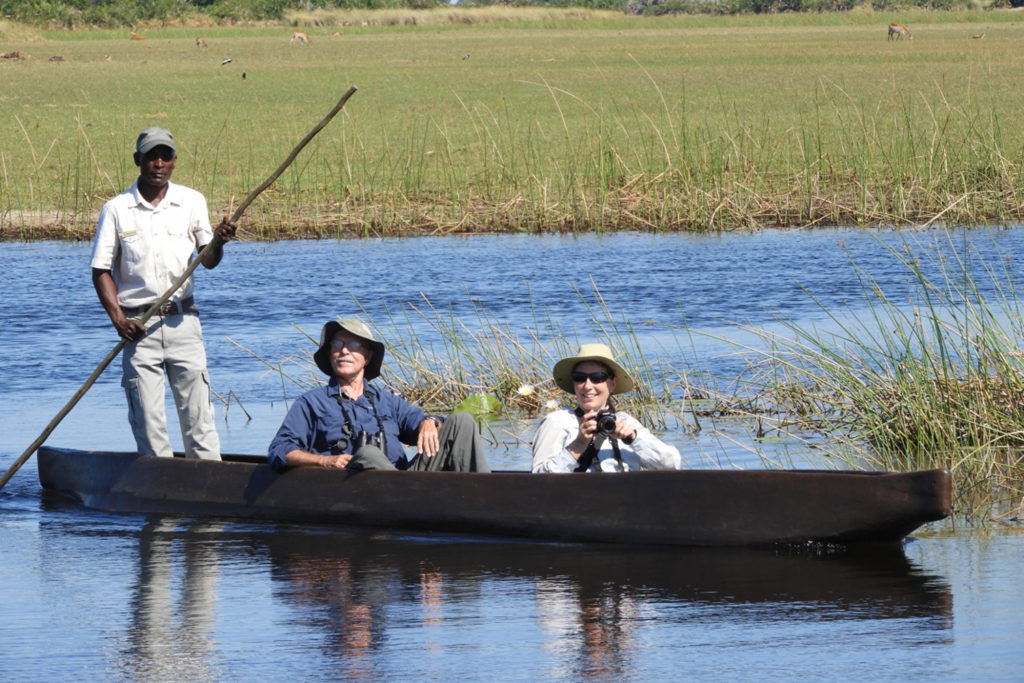
A traditional mokoro is a wonderful boat for moving quietly through the wetlands. Photo by Terry Stevenson.
After we said good-bye to our friends in Johannesburg, we continued on for a few more days at Oliver’s Camp in Tarangire National Park, Tanzania. This is one of our favorite places in the world! We had the camp to ourselves our first two nights and the entire camp staff gave Karen an entertaining surprise birthday celebration. We saw many elephants (our favorites!), as well as a pride of 17 lions and other mammals.
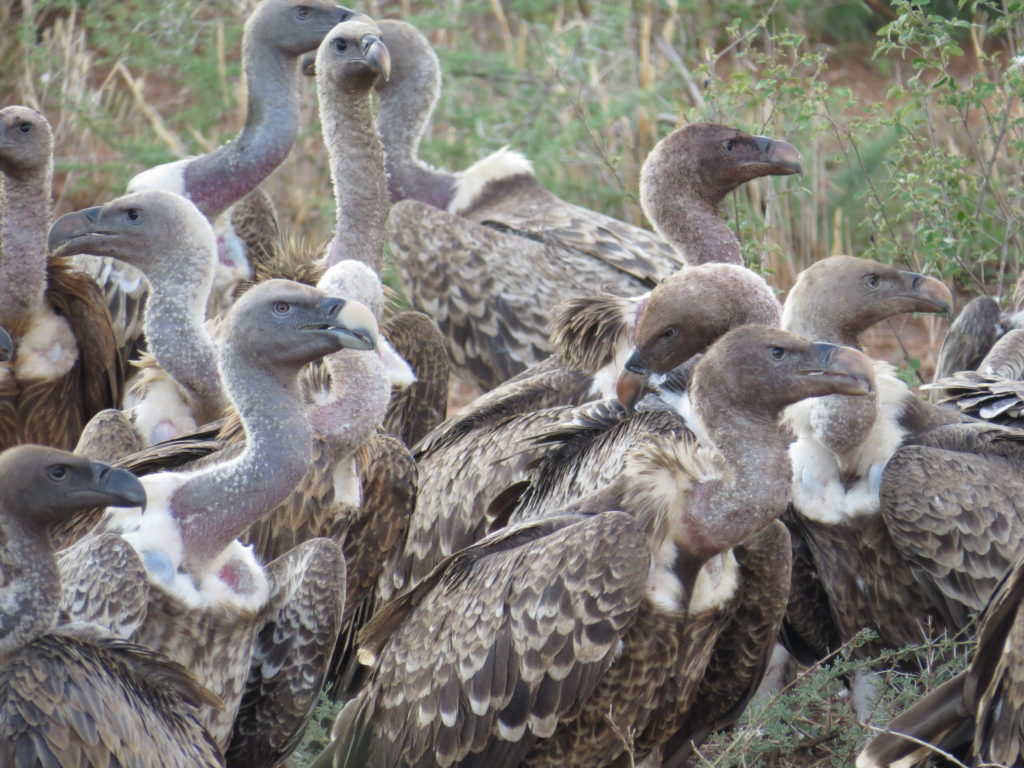
Rüppell’s Griffon Vultures and African White-backed Vultures feed at the buffalo after the lions have finished.
All told, we saw just under 500 species of birds and about 50 species of mammals, reptiles and amphibians! We lost two days to frustrating problems with airlines. But overall it was an incredible time!
